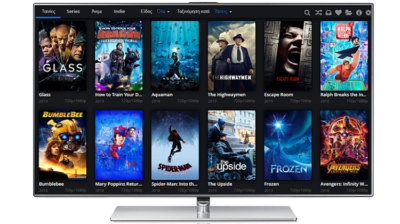
Essential Choices in the Process of Moviemaking
From a completely different perspective, Hollywood produced for a few years “Hispanic” films, that is to say, shot in the Spanish language and intended for export. This Hollywood episode allows the emergence of popular actors, such as Dolores del Rio, Ramón Novarro, Lupe Velez, Rosita Moreno or the former matador Gilbert Roland. A visit to https://real-primewire.com makes things perfect in this case.
The Later Productions

From 1931 to 1933, the annual Mexican production went from two films to around twenty feature films. The melodrama “lupanaresque”, where the central character of the prostitute keeps, against all odds, a heart of gold, blooms with La femme du port (la Mujer del Puerto, 1933) by Arcady Boytler or La task de sang ( la Mancha de sangre, 1937) by Adolfo Best Maugard.
- After the election of the nationalist Láraro Cárdenas, the secretariat for public education produced a social film, Les Révoltés d’Alvarado (Redes, 1934) by Fred Zinnemann – future director of the Train will whistle three times (High Noon, 1952), Hollywood – and Emilio Gómez Muriel, photographed by American social documentary maker Paul Strand.
- But the great director of this period is Fernando de Fuentes, who stands out with lucid films on the Mexican revolution, such as El compadre Mendoza (1933) or Vámonos con Pancho Villa! (1935), and enjoyed immense commercial success throughout Latin America with Allá en el Rancho Grande (1936). This film inaugurates the tradition of ranchera (peasant) comedy, tinged with machismo and family melodrama against the backdrop of idyllic haciendas. The musical version of this genre, based on the canción ranchera (cowherd’s song), is also enjoying its heyday.
The golden age of Mexican cinema
The Second World War benefits Mexican cinema which supplies the important Spanish-speaking market neglected by the fighting powers. In 1945, Mexico produced more than eighty films. It was then that the “golden age” of Mexican cinema began.
The great man of this period, who will long be the very symbol of Mexican cinema for audiences around the world, is Emilio Fernández, known as “el Indio” (the Indian) because of his origins. He is very strongly marked by Eisenstein, but also by “muralism”, which draws its sources from pre-Columbian art and aims at an art “monumental, heroic, human and popular”, and “indigenism”, a firm will to express the cultural reality of Mexico. In 1934, he played the first role of the very “indigenist” Janitzio, of Carlos Navarro, influenced by the aesthetics of Eisenstein and that of Robert Flaherty. The title of his second film as director, I am purely Mexican (Soy puro mexicano, 1942), sets out the central point of the forty films he will make until 1976. Mixed with a popular sensitivity that makes him choose melodramatic themes with torn couples, sacrificed mothers and prostitutes, and the very elaborate photographic and plastic style of the operator Gabriel Figueroa, which sometimes touches on hieratism.
Conclusion
It is a real Mexican star-system which is formed then, with stars like María Félix, which begins in 1942 in El peñón de las ánimas by Miguel Zacarías, then collaborates with Emilio Fernández, knows his best role in Doña Bárbara (1943 ) by Fernando de Fuentes, and which we find later in a film by Luis Buñuel, La fever monte à El Pao (1959) and in French Cancan (1954) by Jean Renoir.
